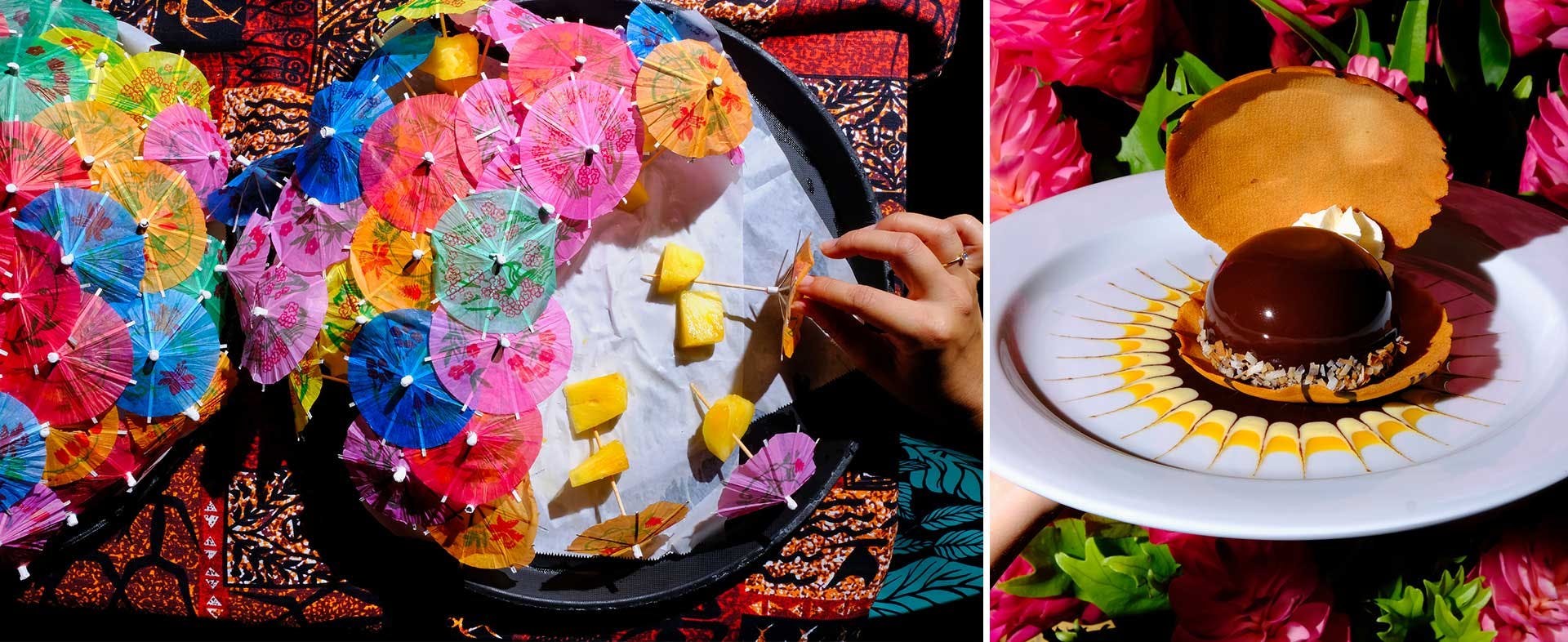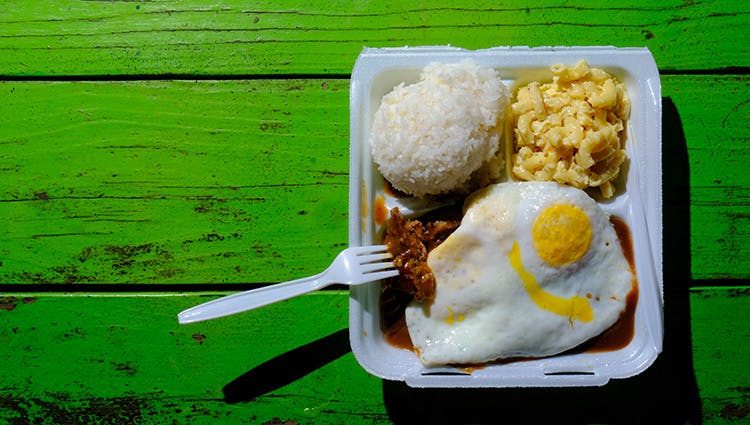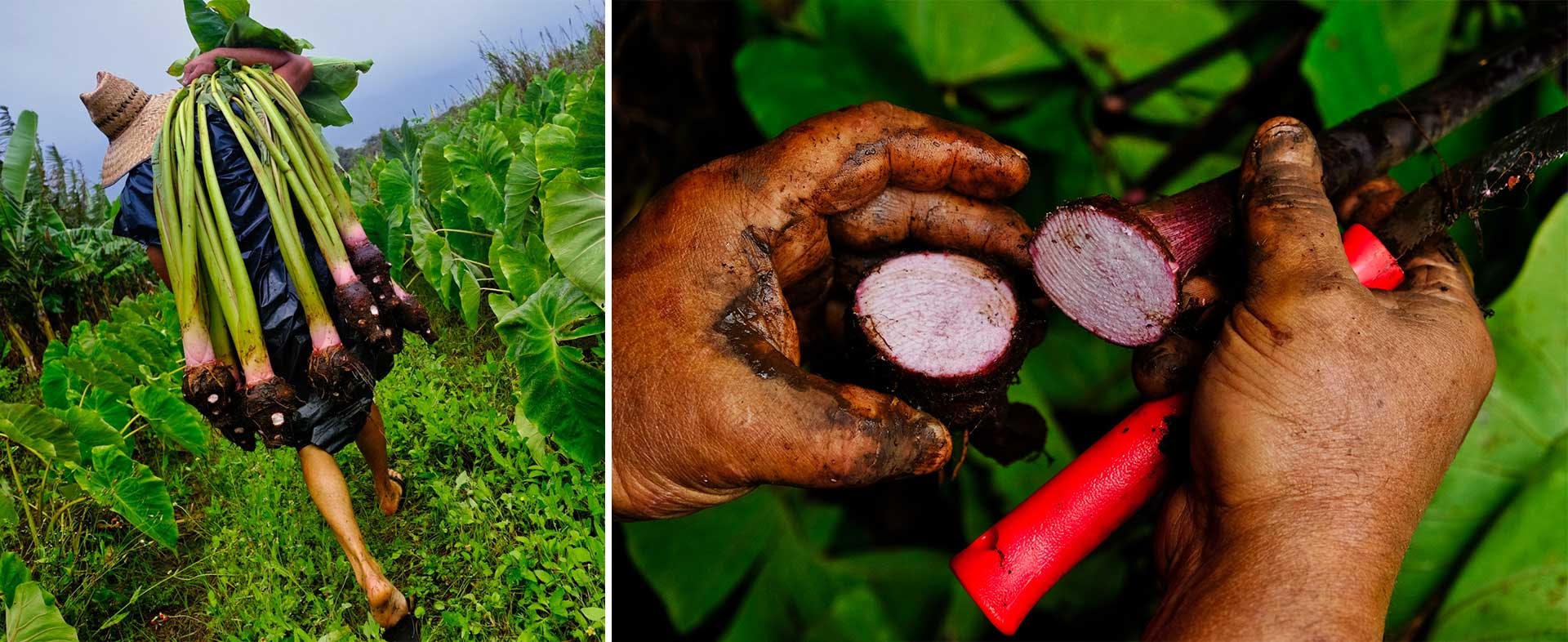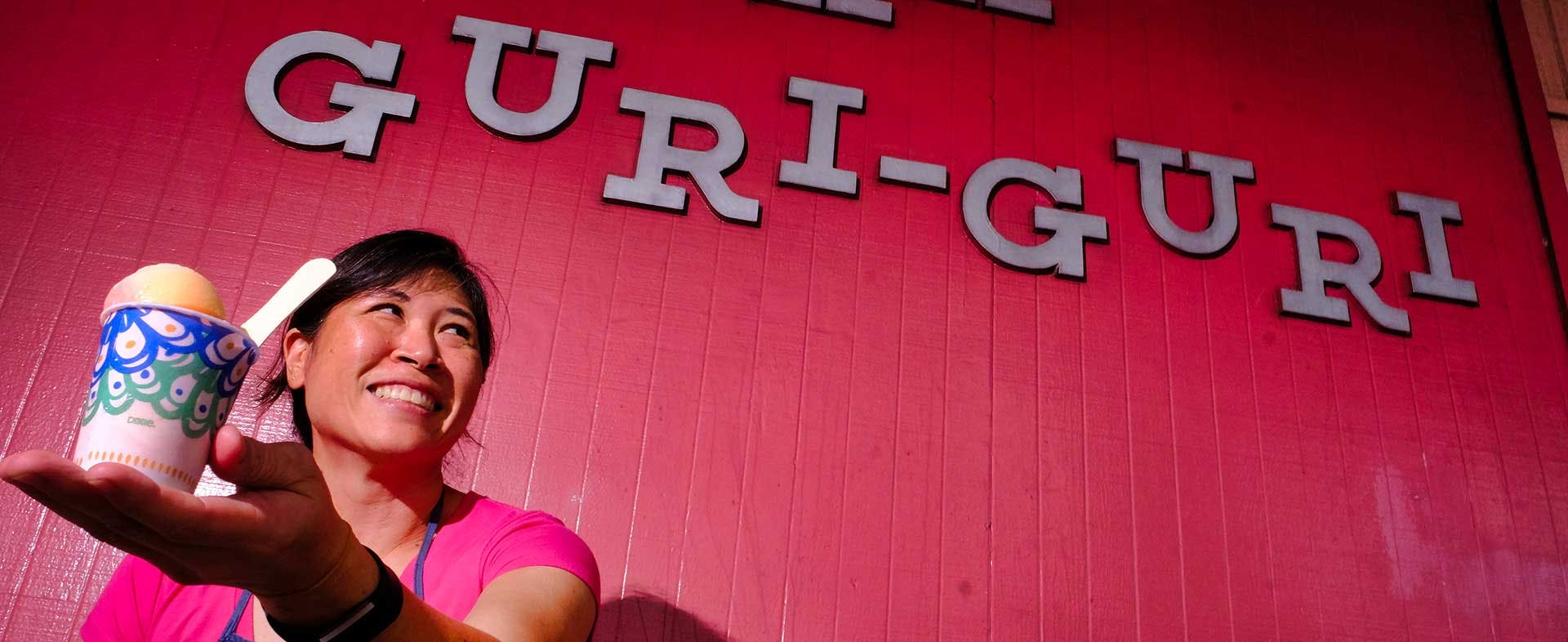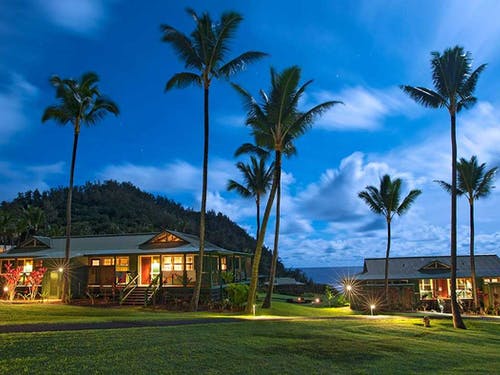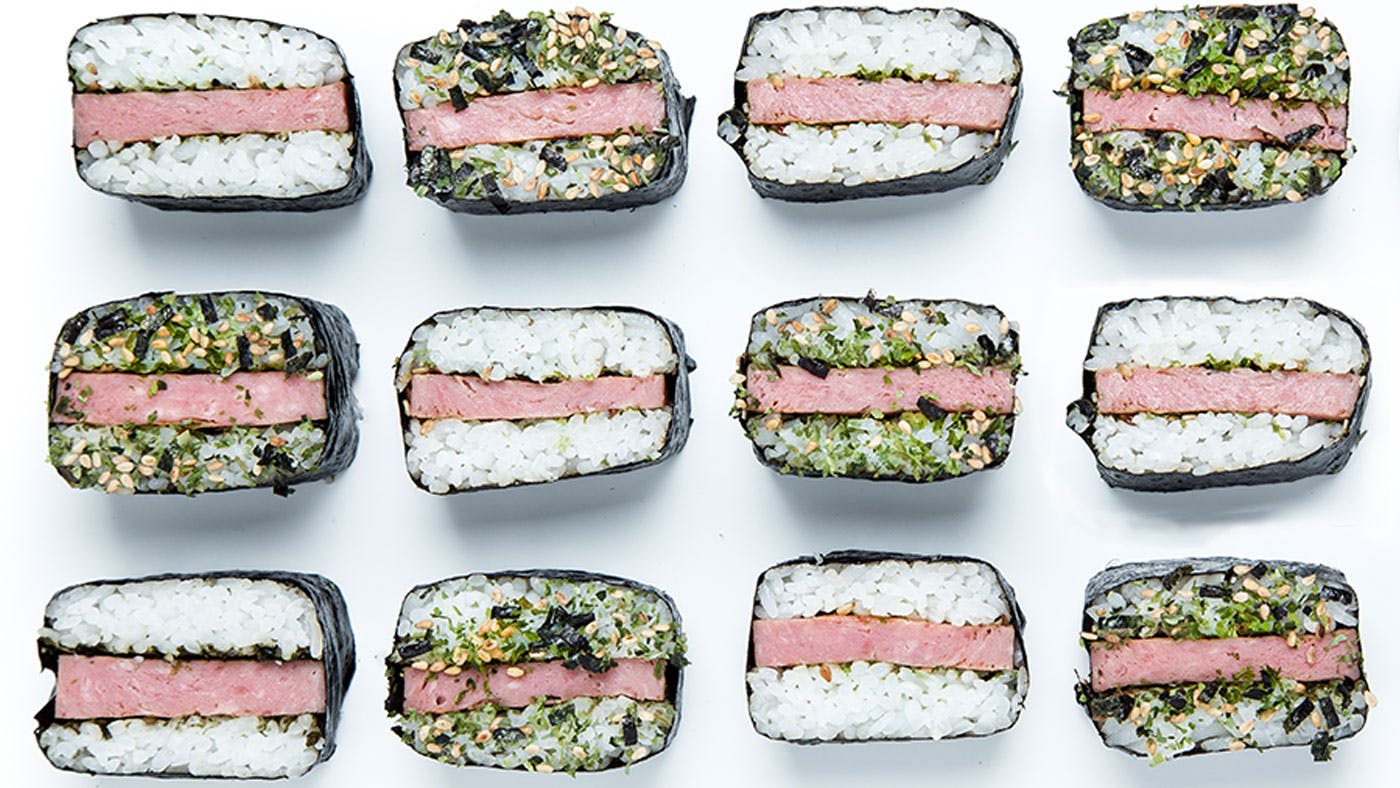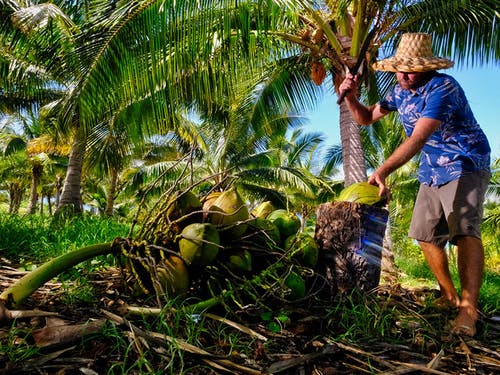Until I landed in Maui, I had never wanted to do anything at an airport except leave immediately. But there I was—minutes after touching down—having an impromptu dinner at a place called Frankly Gourmet with a gaggle of airport workers. Enticed by the scent of sweet-and-tangy kalua pork, I ordered it with a helping of kimchi and a scoop of mac salad, then chowed down peacefully while birds fluttered through the terminal overhead.
In a cab headed to my real dinner, thinking about what else could possibly surprise me about Hawaii's second-largest island, I noticed that it was raining on one side of the car but not on the other. Maui magic. Entering the quaint town of Paia on the north shore of the island, I interrupted my cab driver's stories of celebrity sightings (Willie Nelson, Owen Wilson) to ask what the town was all about. "Oh, you can learn how to become a mermaid here!" she chirped. Maui was shaping up to be everything I had hoped for.
I.
"This is the Disneyland of the Pacific," said Dave Motz, a bartender at Mama's Fish House on the outskirts of Paia, who, like many people, "came here from the mainland and never looked back." By the looks of it, he's not far off. Paia is the stuff of chintzy Polynesian dreams—there's nothing you can do but give in to ordering a mai tai, which naturally comes spruced up with an umbrella-speared pineapple chunk and a tropical flower.
For food, I chose the "onaga caught in deep sea reefs 10 miles off Lanai by Layne Nakagawa." Next, I ordered what they mildly claim to be the most photographed dessert in the world: the Polynesian Black Pearl. Out it came—a pastry clamshell yawning in salute to 20,000 Leagues Under the Sea—to reveal a chocolate-slicked orb encasing a rich passion fruit and chocolate mousse. We were off to a good start. On my way out, the manager gave me the "hang loose" sign.
II.
The next morning, I was on a mission: I wanted a loco moco. Totally unlike the tropical vision that most people have of Hawaii, it's as crazy as it sounds. "Loco means 'local,' and moco means 'egg,'" said Fran Heath, who with her husband and daughter runs Kalei's Lunch Box, a bright-yellow food truck with SpongeBob-esque graphics positioned in a gravel lot across from a Costco. "Just kidding; I have no idea what it means," she said laughing.
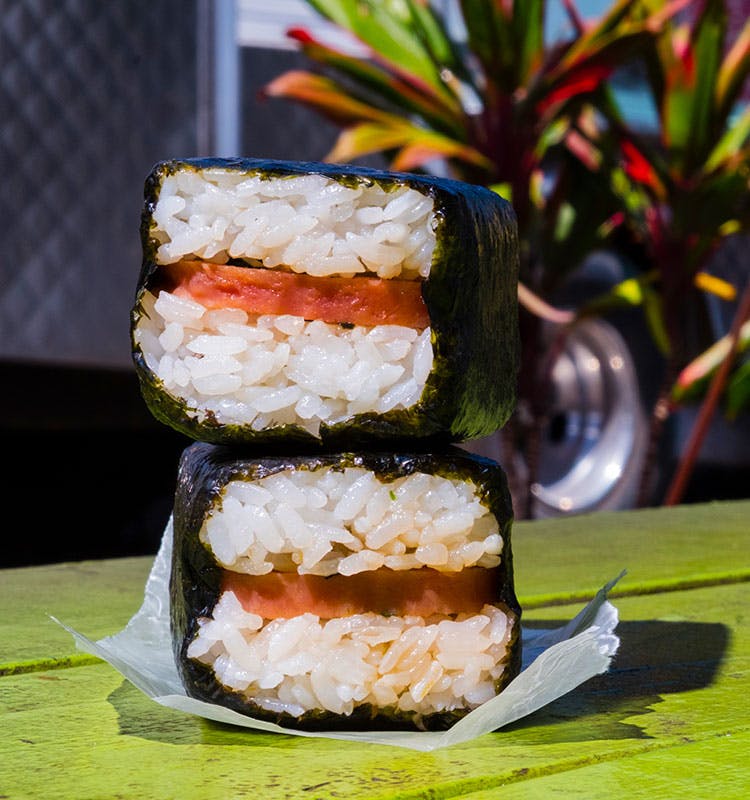
So what is it exactly? It's a mix of hamburger patties topped with a runny egg and mushroom gravy, served with scoops of rice and mac salad. It happily reminded me of school cafeteria food, which is exactly the point—it's where nostalgia and comfort meet a hard-core caloric punch.
Loco moco is part of a matrix of down-home, rice-centered mash-ups called "plate lunches," like chicken mochiko and breaded pork teriyaki. "A lot of construction workers come here for lunch, and then stop back again for dinner," Heath said, leaning through the food truck window. I took the hint and grabbed a Spam musubi (a baseball-size Japanese-Hawaiian sushi-cum-sandwich) for later.
III.
"This is how we perpetuate our culture," said Bobby Pahia, head farmer at Hoaloha Farms in West Maui, while walking me through his vast kalo (or taro) field. Bobby is part of a growing movement concerned with reviving Hawaii's ancient foodways by recultivating the land abused for years by mono-farming sugarcane.
"We are bringing the soil back to life with kalo—it's held in very high reverence here," he said. "It's the focal point of all our cultural discussions." Out of the 250 varieties that once existed, he grows five of them, including ele'ele makoko, which was once reserved for the Hawaiian kings.
Farmhands were plucking the plants out the ground and chucking them onto a tractor for the Maui County Agricultural Festival. I was astonished at the variety of sizes and colors (from white to vividly purple); the ones I get here in New York are small and brown.
"I grew up eating steamed taro and poi (a kind of taro pudding)," Pasha said. For him, it goes beyond mere sustenance, however. "Taro is our older brother—all Hawaiians are descended from it in a way." What's his ultimate goal? "Taro has become a luxury here—I want to get it back on the table."
IV.
Wanting to understand the food traditions of Maui better, I headed over to the Ka'anapali Beach Hotel, which, for better or worse, is known as "Hawaii's Most Hawaiian Hotel," to learn the almost-lost art of throw-net fishing. My teacher was Kent Keawehiku Apo, a self-described beach boy, albeit one who is well into his 50s. While everyone else snorkeled and sunbathed, we waded into the water waist-deep so Apo could use me as target practice, demonstrating how to throw the net.
"I got this job, because I've spent a lifetime on this beach," he said. "I grew up catching fish—sleep nets, throw nets, spearing." He held up the 10-foot-wide net—which his mom gave him—from its top, showing that it was shaped like a Christmas tree. To prepare for a throw, he arranged the net over his shoulder and arm, while letting the edge dangle on the ground, before flinging it off his pinky finger into the water—where it would ostenbily fall over mullet, his favorite fish to catch this way. "It's all in the twist of your body; it takes less brute strength than finesse," he said with a smile. "Anything to do with fishing—the Hawaiians just take to it."
V.
But if there's one place that epitomizes Maui's food culture, it's Tasty Crust, which is possibly the most local-for-locals joint in Maui since 1941. When I arrived, I ran into Mike Victorino, who just so happens to be running for Maui County mayor. He decided to give me an avuncular dissertation on the true nature of Maui's plate lunch.
"We probably have the highest percent of multicultural people here—and I'm proud to say it," he said. "We're all a mix of Portuguese, Chinese, Japanese, Korean, Filipino . . . that's where this food comes from—too many influences to count."
I took his cue and went for the most over-the-top mixed plate on the menu: the spare rib and chop suey combo. It came to the table proudly oversized and brilliantly stained red—with mac salad, of course. I looked around the place—it almost felt like home. I asked Victorino what he usually ordered. "Hmmm, the chopped steak, no onions; I love their fried ahi," he said. "But once in a while—when my wife isn't looking—I will endeavor to have their hotcakes."
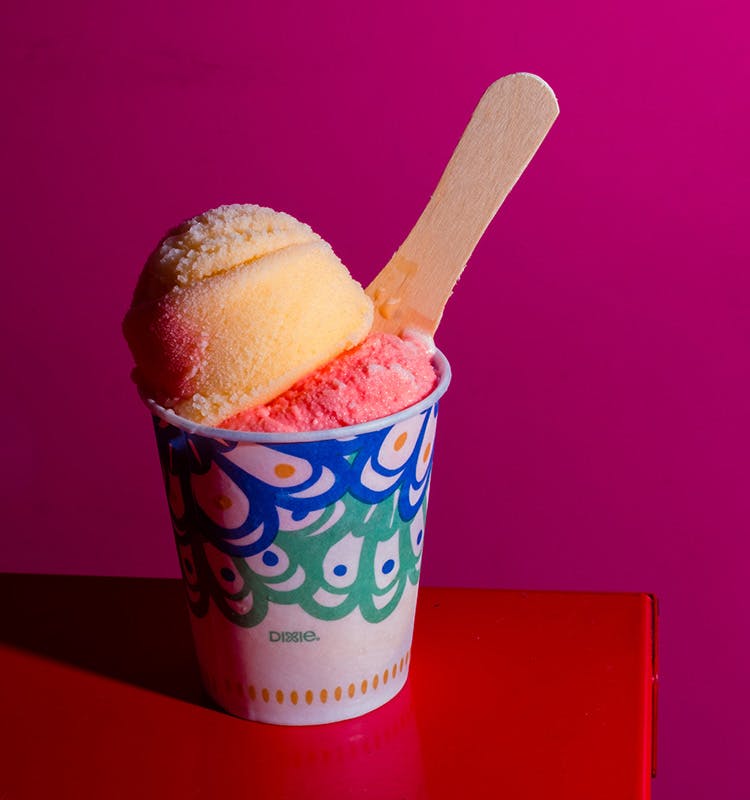
VI.
Later, as I walked into the 100-year-old Tasaka Guri-Guri, a little girl was walking out. I asked her what she ordered: "Five scoops pink," she replied giddily. "Guri-Guri was suppose to be 'goody-goody,' as in, it was so good," Gail Saito, the daughter of founder Henry Tasaka, said laughing. "But no one could pronounce it properly."
Bright and pink, the shop (which started off as a Japanese confectioner making mochi and manju) sells only one thing: sherbet. To make it even simpler, it offers just two flavors, pineapple and strawberry (aka pink), in a move that is steadfastly the opposite of Baskin-Robbins' 31 flavors.
Why only two flavors? The answer is utter Zen: "That's all we've ever made." "This is the first place a lot of people come when they fly home to Maui," Saito said. "They share their memories of the way-back days—we always took it for granted. Because we've always had it."
